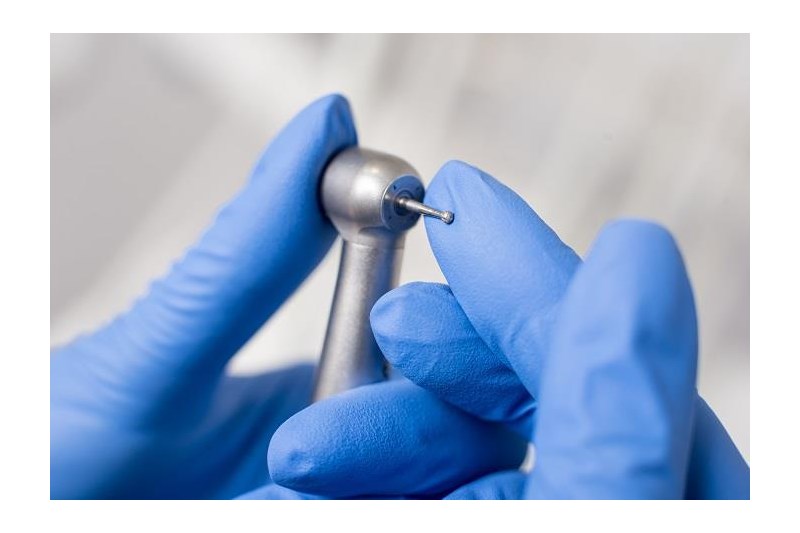
Occupational Hazards in Medical/Dental Instruments
There are many different types of jobs available in the medical and dental fields. Depending on your skills and interests, you can become a nurse, a dentist, a dental hygienist, or a lab technician. These professions can be very rewarding, and they can offer a variety of career opportunities. However, there are some hazards that can arise in the workplace. If you’re planning on becoming a dental hygienist or dentist, make sure that you’re familiar with the risks that come with this job.
Job outlook for dental hygienists
Dental hygienists are highly trained health care professionals that clean and maintain the teeth of patients. They also educate people on the importance of oral hygiene. As dental care becomes more and more common, the demand for these jobs is likely to increase.
Dental hygienists work in a variety of settings, such as hospitals, private practices, and community clinics. This means that their job outlook is relatively good. But there are a few factors that can affect their income.
The cost of living in a certain area can also impact their salary. Cities with high costs of living are likely to pay more for dental hygienists. A more expensive city may also have more competitive wages.
Dental hygienists have a number of career options, including assisting dentists during dental procedures and marketing dental products. There are also a number of administrative and managerial positions available. You could also choose to teach or conduct research.
If you want to earn a higher pay, you will need to gain experience and additional training. For instance, you can pursue a master’s degree. An advanced degree can allow you to take on management and teaching roles. These roles can also boost your salary. Alternatively, you can become a consultant or act as an educational representative for new medical products.
The baby boomer population is aging, which is increasing the demand for healthcare services. Additionally, more and more people are keeping their original teeth. Those with older teeth will be more likely to seek dental services. When it comes to dental hygienists, these individuals will need to perform more complex procedures and handle a variety of patient types.
During your working week, you will be asked to wear protective equipment such as face masks, gloves, and safety glasses. Your work may also require you to be on the go. In some cases, you will be required to work nights and weekends.
Dental hygienists who work in larger dental practices may have a more concentrated patient population. However, this can lead to increased hours and a heavy workload. On the other hand, they can also enjoy more flexible scheduling.
Dental hygienists with more experience generally make more money. That said, they may have to work more hours and may have to sacrifice time with their families. Also, because of their hands-on work, they can suffer from eye strain. Keeping a balance between work and family is important.
Although dental hygienists have perks like good work-life balance and flexible schedules, they also may need to put in extra effort. For instance, they may have to deal with patients who are nervous or uncooperative. Likewise, they will need to adhere to the latest developments in dentistry.
Health benefits of latex gloves for dentists
When dental professionals are performing surgeries and other procedures, it is important to wear protective gloves to protect them from infectious agents. Gloves are designed to shield practitioners from a wide variety of fluids and microbes, which can be transmitted through saliva and blood. However, selecting the right glove can be a challenge.
Dental gloves are often made from natural rubber latex or synthetic materials. These gloves are inexpensive and provide excellent barrier protection. They also offer a comfortable fit and superior tactile sensitivity. The material is also resistant to tears and punctures, making them suitable for many medical and dental procedures.
Natural rubber latex has long been considered a safe and preferred glove material. However, in recent years, some health-care professionals have developed an allergy to latex. This allergy causes the body to mistake natural rubber latex for a noxious substance. Symptoms include itching and pain. If the condition is not treated, it can lead to a long-term impairment.
Nitrile gloves are another option for patients with a latex allergy. Although these gloves are not ideal for most medical and dental procedures, they do have a low allergy rating and are a safer alternative to natural rubber latex.
Infection control guidelines from the Center for Disease Control and Prevention (CDC) recommend that physicians, nurses, and other health-care workers wear disposable medical gloves. While the FDA has not formulated regulations on these gloves, the US Department of Health and Human Services and other agencies have developed recommendations for safe and hygienic procedures.
Another benefit to wearing dental gloves is that they clean and disinfect dental instruments and equipment. They are also great at preventing the spread of disease from healthcare workers to patients.
As a matter of fact, the CDC has published infection control guidelines for dentists and other dental care professionals. The guidelines contain specific instructions for avoiding infections and recognizing and controlling irritants in gloves.
It’s also important to remember that not all gloves are created equal. One of the most critical criteria in selecting a glove is its tactile sensitivity. For example, a glove with a large surface area may cause excessive hand strain. Additionally, it is important to avoid gloves that are too small or too tight. A glove that fits too tightly can also cause a reduction in tactile sensation.
Some clinicians prefer ambidextrous gloves. These allow them to hold both hands in a straight line, reducing strain on their hand muscles. But, ambidextrous gloves can also cause repetitive stress injuries.
Medical and dental gloves are often made from powdered latex, which is much easier to put on than vinyl. Powdered gloves also tend to have a lower protein content. According to research, using lower protein gloves can reduce the number of cases of latex reactions among health-care workers.
Occupational hazards
Occupational hazards in medical/dental instruments are an occupational health concern that must be addressed. There are a number of physical, chemical, and psychological factors that can lead to injury or disease.
Identifying and preventing the most important occupational hazards is essential to ensuring the safety and wellbeing of workers. Dental practitioners must make sure that their prevention practices are up to date and that they are equipped with the right tools to avoid harm.
Physical hazards include slips and falls, vibrations, and repetitive motions. Chemical risks include irritants, solvents, and disinfectants. In addition, dental professionals are exposed to the hazards of biological agents, including viruses and bacteria.
Biological hazards, on the other hand, may result in life-threatening infections. Some of the common sources of indirect infection in dentistry are aerosols of saliva, mucous membranes, and gingival fluid. During high-speed cutting, some dental materials may be inhaled or ingested.
Aside from the obvious dangers of exposure to harmful substances, a number of dental materials are volatile and may cause respiratory effects. To reduce the risk of injury, dental employees should be properly trained, use protective equipment, and use proper waste disposal.
Dental personnel are subjected to a variety of musculoskeletal injuries, including aches and pains. Additionally, some dentists experience allergic reactions to latex gloves, eyewear, and the chemical disinfectants they use to clean their workplace.
The most important occupational hazard, however, was infection. In fact, dentists reported more health problems than other medical professionals. They also experienced a higher rate of musculoskeletal disorders.
The study population used a wide range of precautions, including proper waste disposal, sterilization of instruments, and proper eyewear. However, a number of high-risk individuals had less than optimal levels of education or experience. This indicates that educating dentists about the most important occupational hazards is a worthwhile task.
In addition to these measures, it is important to monitor individual and group behavior. Taking short breaks between patients and practicing good posture will help maintain a healthy dental environment.
It is also recommended that dental professionals attend continuing dental education programs. This will help them stay abreast of newer developments and strategies to promote a happy and healthy work environment.
Occupational hazards in medical/dental instruments should be part of a continuous educational program to ensure a safe and healthy workplace. Employers should conduct regular risk assessments to identify potential hazards and implement prevention procedures.
Educating dentists and dental hygienists about the most important dental safety measures is a great start. However, a proactive approach to managing risk is the best way to protect both patients and staff.
Developing policies, procedures, and training procedures is an essential part of any dental practice. Ensure that your team follows local protocols and national health and safety regulations.




